PROGRAM SCHEDULE 2004-2005
18th Season
| Sat | Sep | 4 | 7:00 | Shostakovich: Symphony No. 5
 Symphony No. 5 in d, Op. 47. Completed 1937, first performance November 21, 1937, in Leningrad. Scored for 2 flutes, piccolo, 2 oboes, 2 clarinets, E flat clarinet, 2 bassoons, contrabassoon, 4 horns, 3 trumpets, 2 trombones, bass trombone, tuba, 2 harps, piano, celesta, tympani, snare drum, bass drum, cymbals, xylophone, glockenspiel, triangle, and strings. Symphony No. 5 in d, Op. 47. Completed 1937, first performance November 21, 1937, in Leningrad. Scored for 2 flutes, piccolo, 2 oboes, 2 clarinets, E flat clarinet, 2 bassoons, contrabassoon, 4 horns, 3 trumpets, 2 trombones, bass trombone, tuba, 2 harps, piano, celesta, tympani, snare drum, bass drum, cymbals, xylophone, glockenspiel, triangle, and strings.
At the time of its writing, Shostakovich was in trouble with the communist party, who expected composers to write music for the common man to further communist ideals. Symphony No. 5 was hugely success for Shostakovich, and more importantly it met approval from his Soviet masters. Upon hearing the Fifth Symphony you cannot help but think that Shostakovich pulled the wool over the Soviets eyes, as there is strong message just under the surface of the music. In the first half of the program we'll hear excerpts from two of Shostakovich's compositions that produced criticism from the Soviets, the opera Lady Macbeth of Mtsensk, and the Fourth Symphony.
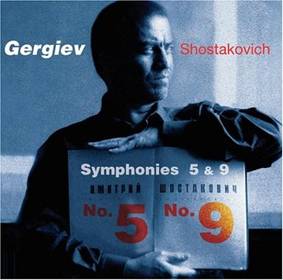
Valery Gergiev has just released a new version of Symphony No. 5 with the Kirov Orchestra. It has been widely praised for its interpretive insights and recording quality. This will be heard in the second half of the program.
The theme of this program was selected to correspond to the presentation of Shostakovich's Symphony No. 5 by the Toronto Symphony Orchestra at Roy Thomson Hall on October 21st & 23rd, 2004. Emanuel Krivine will conduct it.
(bs/bs)
[Discography]
|
| Sun | Sep | 19 | 2:00 | Mahler's Orchestral Song Cycles
Like most German romantic composers, Mahler was a prolific lieder writer.
There are however some very important differences between Mahler and both his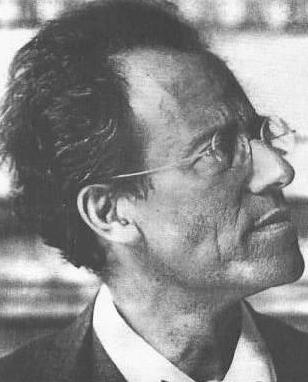 predecessors and contemporaries. For one thing, most of his lieder are
orchestral, and even those which started out as voice and piano settings
were then later rewritten as orchestral songs. Far more important though
is the way his lieder relate to the rest of his artistic output. In the
case of Schubert, Schumann, and Brahms, although an extremely
important part of their output without which their portraits as
artists would be not only incomplete but almost inconceivable, lieder nonetheless form a
separate part of their creation, with very limited influence on their
other works.
predecessors and contemporaries. For one thing, most of his lieder are
orchestral, and even those which started out as voice and piano settings
were then later rewritten as orchestral songs. Far more important though
is the way his lieder relate to the rest of his artistic output. In the
case of Schubert, Schumann, and Brahms, although an extremely
important part of their output without which their portraits as
artists would be not only incomplete but almost inconceivable, lieder nonetheless form a
separate part of their creation, with very limited influence on their
other works.  In the case of Mahler, the influence of his lieder on his symphonies --
the only other aspect of his creation, and the one for which he is best
known -- is overwhelming. So strong is this influence that his
symphonies, especially the earlier ones, can be properly understood only
in the context of the lieder. This program will examine the link
between both the “Lieder des fahrenden Gesellen” and “Des Knaben Wunderhorn”
(his best known songs) and his early symphonies, and will also present his
other, less known lieder. In the case of Mahler, the influence of his lieder on his symphonies --
the only other aspect of his creation, and the one for which he is best
known -- is overwhelming. So strong is this influence that his
symphonies, especially the earlier ones, can be properly understood only
in the context of the lieder. This program will examine the link
between both the “Lieder des fahrenden Gesellen” and “Des Knaben Wunderhorn”
(his best known songs) and his early symphonies, and will also present his
other, less known lieder.
(jn/jn)
[Discography]
|
| Sun | Oct | 24 | 2:00 | B.Y.O. András Schiff
Music Toronto does it again! Another powerful opening concert for their Piano Series on Oct. 26th, which will mark the highlight of the 2004-2005 musical season of our city.
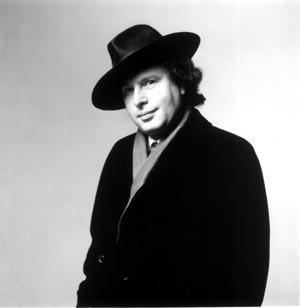
András Schiff will make his long-awaited return to Toronto with a daring, challenging program.
He will dedicate the entire first half of his recital to Sonata No. 3 in B minor by Chopin. What else could be a better match to his virtuosity and modern sensitivity than the large scale and heroic cantabile of this work?
The second half of the evening is an all-Mozart program, in which several pieces are sandwiched between Fantasie K. 475 and Sonata K. 457, both in C minor. The dark shadow of death will be right there to haunt us.
Classical Music Club Toronto prepares for this memorable event through our famous BYOR, Bring Your Own Recordings. If you find any recordings by András Schiff in your collection, then please bring them to the meeting to share with CMC members, or be an innocent and pure member of a selection jury to choose the pieces to be played. Even if you don't bring a recording at all, you can still be a part of the group enjoying the artistry of András Schiff together.

More about Mr. Schiff
(*/ta)
|
| Sat | Nov | 6 | 2:00 | Mahler: Symphony No. 10
I was moved to tears, I had not realized there was so much Mahler in it.
Letter from Alma to Deryck Cooke, May ‘63
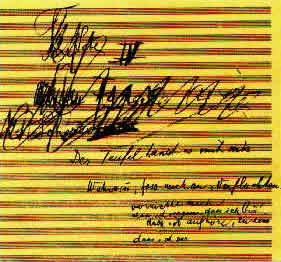
Gustav Mahler´s last symphonic work has generated more speculation and intrigue than almost any other orchestral composition. Originally inspired by his intense love for his wife Alma, it has become haunted by his discovery of her adultery and the reality of his own mortality which were never far from his mind. On May 18, 1911, he died leaving behind an unfinished score. Only the first movement (Adagio), the second movement (Scherzo I), and the first thirty bars of the third movement (Purgatorio) were orchestrated. But, that´s only the beginning of the story. More than simply an unfinished work, the events of the following years read like a Romantic novel combined with a detective story — the five folders containing the manuscript in Mahler´s own handwriting; the publication in 1924 of a manuscript edition; the grieving widow at first refusing any attempts to complete her husband´s legacy, later giving in tearfully having heard a recording on tape of one of these attempts; no less than four eminent
musicologists (and various conductors) trying their hand at completions (or ‘performing versions’); the division of the music world into those who believe that the uncompleted work should never be heard except for the Adagio and those who advocate continuing encounters with the attempts at completion.
Symphony No. 10 is a masterpiece both old and new. The Adagio movement has always been considered a gem of the late Romantic period. But, with the slow emergence of the various ‘performing editions’, the work is still in a state of transformation and evolution and is very much a work of the 21st century. Like other works of Mahler´s last years, it is a summing up of his many compositional signatures as well as an uplifting affirmation in the face of approaching death.
This is an opportunity to discover the amazing history behind one of the 20th century´s most famous ‘incomplete’ masterpieces and to encounter the work for yourself and make your own conclusions.
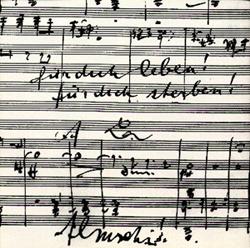
Toronto Symphony Orchestra
Performance dates:
Wed. November 24, 8:00 P.M.
Thur. November 25, 8:00 P.M.
Sat. November 27, 8:00 P.M.
Mahler: Daniel Harding, conductor
Haydn: Steven Isserlis, cello
(jn/ta)
|
| Sun | Nov | 21 | 2:00 | Gregg Hobson's Choice, Part I.
"All musical people seem to be happy; it is to them the engrossing pursuit, almost the only innocent and unpunished passion." — Sydney Smith
An eclectic selection of new and old is the best way to describe "Gregg Hobson's Choice." The early includes Gioseffo Gaumi (Never heard of him? Well now you will!) and Michael Praetorius. A generous selection of baroque composers, among them Vivaldi, with an equally generous offering of romantics such as Bruckner. The modern period includes both classical (lan Krouse and Walter Piston) and popular compositions of both jazz (Harold Arlen and Cy Coleman) and broadway (George Gershwin).
Instruments and ensembles include solo voices, trumpets (both Baroque and modern), recorders, mandolins, choirs, orchestras, guitar, jazz groups and vocals, organ, piano — something for everyone.
Come and enjoy. And afterwards take away the horse nearest the door, chosen by Hobson specifically for you.
(ge/py)
[Discography]
|
| Tue | Nov | 30 | 7:00 | Furtwängler's 50th Anniversary
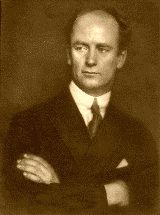 The German conductor Wilhelm Furtwängler passed away on November 30, 1954. This year 2004 is the 50th anniversary of his death. His philosophical depth, his intensity and passion, kept him on the throne as one of the most respected conductors of the ages.
The German conductor Wilhelm Furtwängler passed away on November 30, 1954. This year 2004 is the 50th anniversary of his death. His philosophical depth, his intensity and passion, kept him on the throne as one of the most respected conductors of the ages.
Because his recording career included the earliest days of LPs, we have been able to have the great opportunity of experiencing his artistry. For many of us his recordings had personal significance as milestones in our own history of musical appreciation. Aren't you one of those who was electrified by the live recording of Beethoven's No. 9 in 1951 at the postwar reopening of the Bayreuth Festival?
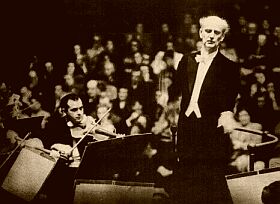 But since the mid-90s his radio recordings have been remastered and released, thanks to the French company THARA. For many years listeners were chasing those pirate recordings, but not any more. Those radio broadcasts are available in the sound quality of the early days of stereo.
But since the mid-90s his radio recordings have been remastered and released, thanks to the French company THARA. For many years listeners were chasing those pirate recordings, but not any more. Those radio broadcasts are available in the sound quality of the early days of stereo.
What a discovery! These remastered radio recordings reveal the forgotten charm of Furtwängler. He was the magician of piano and whispering sound!
Some critics say that the Maestro hated studio recordings, and also that he was very much aware of the limitation of the dynamic range of the equipment of that time. In the studio he conducted the music in a way their machines could capture and reproduce. But on radio, because virtually all of the concerts were live, he did not do any “adjustments.”
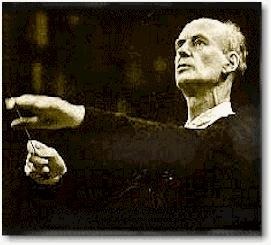 We still admit that some of the studio recordings are absolutely historical. Spontaneity is even evident in some of them. At the CMC presentation we will experience Furtwängler's recordings both from the studio and live concerts. And what will your own discoveries be?
We still admit that some of the studio recordings are absolutely historical. Spontaneity is even evident in some of them. At the CMC presentation we will experience Furtwängler's recordings both from the studio and live concerts. And what will your own discoveries be?
Additional resources about Furtwängler:
Short Biography
Survey of his life and artistry 'Genius Forged in the Cauldron of War'
Photo Album
The Wilhelm Furtwängler Society of America
TAHRA (recording company)
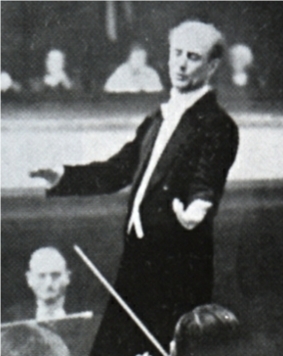
(ta/ta)
|
| Fri | Dec | 10 | 6:30 | Christmas Party
Each year, the Classical Music Club Toronto holds a Christmas party for members and their guests. This year, a decision was made to move the party to a FRIDAY night because Saturdays in December tend to be fully booked for many of our members. Details including location will be sent to members via e-mail or by flyer. The kitchen will open at 6:30, and the party proper will begin around 7 p.m.
()
|
| Sun | Dec | 26 | 2:00 | The Nutcracker, choreo. by Matthew Bourne

Following the eye-opening, delightful productions by Maurice Béjart (2002) and Mark Morris (2003), Classical Music Club Toronto continues its Boxing Day tradition: DVD/Video presentations of innovative versions of NUTCRACKER.
Matthew Bourne has achieved worldwide artistic and popular success with
his imaginative new versions of classical ballets such as Swan Lake (with the flock of male swans, the symbol of the Prince's homosexual fixation), Cinderella and The Car Man. His recent production of Play Without Words won 2 Olivier Awards.
"FULL OF INVENTION, OUTRAGEOUS DESIGNS AND MORE CLEVER IDEAS THAN ANY TEN VERSIONS PUT TOGETHER"
Time Out
"CRAMMED WITH SEQUINS SPARKLE AND SWEETIES"
Daily Telegraph
"UTTERLY DELICIOUS - A DAZZLING EXTRAVAGANZA, AS STICKY AS A BAG OF DOLLY MIXTURES"
Sunday Telegraph
Let's hear the introduction to the production from Matthew Bourne himself
"Nutcracker! has some of Tchaikovsky's best storytelling music and I'm sure that you will enjoy my particular twist on this classic tale.
 "My version begins in a bleak Dickensian orphanage on Christmas Eve, where our heroine Clara and her friends are plotting their escape. There follows a fantastical snow-covered adventure to a frozen lake and the spectacular candy world of Sweetieland where you will meet such unforgettable characters as the head-banging Gobstopper Boys, the vain Marshmallow Girls and the salacious Knickerbocker Glory. "My version begins in a bleak Dickensian orphanage on Christmas Eve, where our heroine Clara and her friends are plotting their escape. There follows a fantastical snow-covered adventure to a frozen lake and the spectacular candy world of Sweetieland where you will meet such unforgettable characters as the head-banging Gobstopper Boys, the vain Marshmallow Girls and the salacious Knickerbocker Glory.
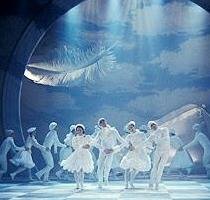 "Last year I was especially pleased to hear that my version of Nutcracker! appeals to all ages - many people told me that they had taken their children to see it - and then returned with their (adult) friends! I do hope you will be able to come and see the show this year or better still, bring your friends and family as the perfect Christmas treat! "Last year I was especially pleased to hear that my version of Nutcracker! appeals to all ages - many people told me that they had taken their children to see it - and then returned with their (adult) friends! I do hope you will be able to come and see the show this year or better still, bring your friends and family as the perfect Christmas treat!
"See you in Sweetieland..."
Matthew Bourne
More information on Matthew Bourne's NUTCRACKER!
|
| Sun | Jan | 9 | 2:00 | Mozart @249


The upcoming Mozart @249 is not for the faint hearted. We will go beyond the myth, phantom the depth , and explore various musical genres of Mozart. The program will contain excerpts of masterworks composed at different stages in his life. Featured pieces will include solo piano, piano concerto, violin sonata, wind divertimentos,
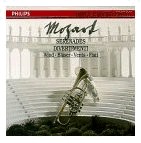


and 'definitive' interpretations of vocal works.

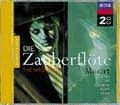
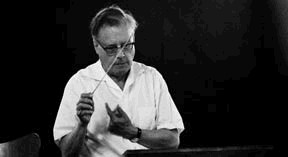
We will experience Mozart's power of expression from innocence to passion.
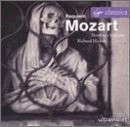
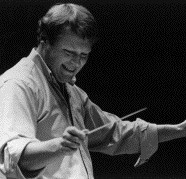
Let's forget about the Toronto winter — come and join us for this heart warming gathering.
(mf/ta)
[Discography]
|
| Sun | Feb | 20 | 2:00 | The Sonata Form
 |
Sonata Form is one of the great esthetic inventions of Western civilization. Sonata form is not a sonata. Rather, it is an architecture for organizing and experiencing music, from a three-minute piano piece to an hour-long symphonic movement. Using ideas from Charles Rosen's book Sonata Forms, we will listen to a variety of musical examples, from the 1700s through to modern times, and we will listen to specifically what makes them sonata form. |
Hopefully, you will leave with an appreciation of why sonata form is such a satisfying musical model, and why so many composers have used it as the underlying structure to their music.
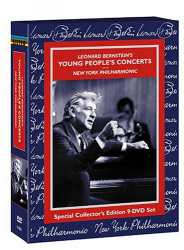 The second half of the program will feature a 1964 televised presentation by Leonard Bernstein of “What Is Sonata Form” to an audience at Lincoln Center. The second half of the program will feature a 1964 televised presentation by Leonard Bernstein of “What Is Sonata Form” to an audience at Lincoln Center.
(The Dresden programme has been postponed.)
(rb/rb)
|
| Sun | Mar | 6 | 2:00 | Brahms' Violin Concerto
Brahms' concerto for violin and orchestra in D is often regarded as the
greatest example of the work, competing only with Beethoven's concerto
in popularity and difficulty. No violinist's repertoire is complete
without these two concerti. Brahms' concerto is consciously inspired by,
and modeled on Beethoven's (choice of key, simplicity of the main
themes, etc.), yet it is utterly romantic and individual in character and
style. It is unabashadely virtuoso, full of passages of staggering
technical difficulty, yet it is symphonic in its proportions and richness of
orchestral writing. I will compare and contrast Brahms' violin concerto
with Beethoven's, and also review some of the outstanding recordings of
this amazing work.
(jn/jn)
|
| Sun | Mar | 20 | 2:00 | Canadian Orchestral Music

Toronto's Classical Music Club will be alive with both music and true-north patriotism on the 20th of March. Virtually unknown Canadian composer and sound recordist John S. Gray will take club members on a brief tour through the field of Canadian orchestral music. Drawing on several sources, Gray's presentation will feature many examples of our nation's musical oeuvre on great recordings. There will be a surprise of one, two, or possibly more mystery guests from the Canadian musical scene.
Who among us have been to the Winnipeg Symphony Orchestra's New Music Festival? Why was Glenn Gould playing chamber music at Stratford, Ontario in 1960? Which Toronto figure is only two degrees of separation from Shostakovich? Who was Canada's medal winner in the field of music at the 1948 Olympics? Who met Milhaud and Honneger both in the same day? Why is a Canadian the head of the European Rostrum of Composers? Why do star instrumental soloists keep a day open to visit Kingston, Ontario when
they're on tour?

If even one of these questions has you intrigued, by all means join us at the Classical Music Club presentation on Sunday, March 20th. Refreshments will be served.
(jg/bs)
|
| Sat | Apr | 9 | 7:00 | Gregg's Choice, Part II
Please note the day and the time!
 Another surprising and eclectic selection of new and old recordings from the collection of one of our long term members.
Come and enjoy. And afterwards, take away the horse nearest the door, chosen by Hobson specifically for you.
(ge/jn)
|
| Sun | Apr | 24 | 2:00 | Wars and Music: Part 1
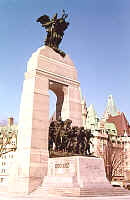

My Subject is War, and the pity of War. The Poetry is in the pity. All a poet can do is warn.—Wilfred Owen
Throughout history man has chosen to settle his differences through the instrument of War. This spectacle of horror and revenge, death and destruction, victory and triumph has inspired composers through the ages. Fortunate and few indeed are those whose lives were not touched by war. In choosing to explore musical works inspired by war (and ‘peace’), I hope to share the influence works like the War Requiem (Britten) and the Missa Solemnis (Beethoven) have had on my life, as well as create a space where fellow travelers could share their experiences.

The main work I have chosen, for what I hope will be the first in a series of programs, is the War Requiem by Benjamin Britten. I must confess my interest in Britten stemmed, in no small part, from the fact that he was homosexual. Written to celebrate the re-building of Coventry Cathedral, the work was first performed in the re-built cathedral on 30 May 1962. It was an immediate critical and popular success. The inclusion of the poetry of Wilfred Owen within the Latin text of the Mass for the Dead, is brilliant and effective. As William Plomer has written, “It is a function of creative men to perceive the relations between thoughts, or things, or forms of expression that may seem utterly different, and be able to combine them into some new form”. I hope those of you who are familiar with this beautiful work will share your insights with those of us who have yet to get to know it. Thank you.
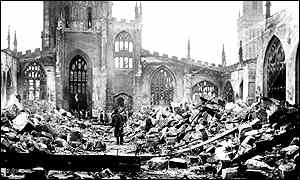
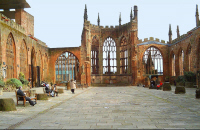

(da/ta)
|
| Sun | May | 15 | 2:00 | Puccini's Madama Butterfly
“I am conscious that in it [Madama Butterfly] I have written the most modern of my operas.”
— Giacomo Puccini
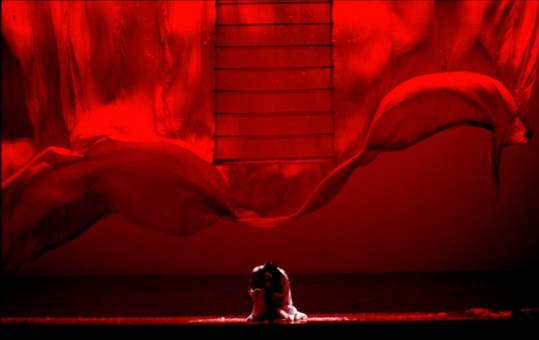
On the last Sunday program for our 2004/2005 season, I will be taking a look at one of the most popular operas in the entire repertoire. Premiered at La Scala in Milan on February 17, 1904 (and welcomed with a strong negative public reaction!), this work is often considered to be a descendant of the operas of Bellini, Donizetti, and Verdi. However, it is well documented that Puccini was keenly aware of his contemporary musical world. As well, an important aesthetic movement of the day, Stilo Liberty, the Italian equivalent to Art Nouveau, had an influence on much Italian art, both visual and musical. Therefore, I will be taking a different viewpoint, examining Madama Butterfly as being much closer to the contemporary sound worlds of the musical giants of the 20th century such as Richard Strauss, Gustav Mahler, Maurice Ravel, and Claude Debussy. Also, we will have an opportunity to see some of the changes that Puccini made to the opera for the much more successful productions in Brescia and Paris following the disastrous Milan premiere.
- Madama Butterfly [premiere] (February 17, 1904, Teatro alla Scala, Milan)
- Madama Butterfly [revision 1] (May 28, 1904, Teatro Grande, Brescia)
- Madama Butterfly [revision 2] (July 10, 1905, Covent Garden, London)
- Madama Butterfly [revision 3] (December 28, 1905, Opéra Comique, Paris)
(js/ta)
|
 |
A summer of French Music 2005
|
| Sat | Jun | 4 | 7:00 | French Baroque Music
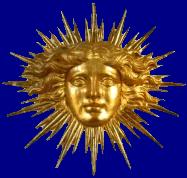 Operas, instrumental and orchestral music, harpsichord and organ suites, choral music great and small — imagine: it was an elegant yet powerful music, embraced by Sun King, court, and public alike as the epitome of the French national style, but it had been invented and promulgated, almost single-handedly, by an ex-patriate Italian, Jean-Baptiste Lully. A generation later, native-born Jean-Pierre Rameau was to bring this expressive baroque style to a climax, though compromising its inherent Frenchness, some felt, with a rather flashy Italian overlay.
Operas, instrumental and orchestral music, harpsichord and organ suites, choral music great and small — imagine: it was an elegant yet powerful music, embraced by Sun King, court, and public alike as the epitome of the French national style, but it had been invented and promulgated, almost single-handedly, by an ex-patriate Italian, Jean-Baptiste Lully. A generation later, native-born Jean-Pierre Rameau was to bring this expressive baroque style to a climax, though compromising its inherent Frenchness, some felt, with a rather flashy Italian overlay.
Celebrate the start of our 2005 Summer of French Music with an evening of French baroque favourites.
(rp/ta)
|
| Sun | Jun | 26 | All
day | Pride Toronto, CMC table at Community Fair
Look for our table in the Community Fair section. Drop by and chat to club members about what our club is all about. Support the club by buying a CD or other item. And take some brochures to share with your friends.
|
| Sat | Jul | 9 | 7:00 | Amedée-Ernest Chausson (1855-1899)
During the heat of early summer we have two opposing choices: trying to avoid avoid intense, sensuous music or just immersing ourselves in it. Choosing the latter road, the Classical Music Club Toronto's summer celebration of French music continues with a program devoted to several works of Ernest Amédée Chausson … just the thing for a warm Saturday evening.
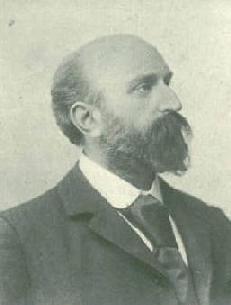 Born into an upper middle-class Parisian family, Chausson began his professional life as a writer and artist before turning to the world of music. Generally, his work shows the influence of Massenet, Franck, Richard Wagner, and Johannes Brahms. He is considered to be the bridge between Massenet and Franck and the later generation of French composers such as Claude Debussy. Born into an upper middle-class Parisian family, Chausson began his professional life as a writer and artist before turning to the world of music. Generally, his work shows the influence of Massenet, Franck, Richard Wagner, and Johannes Brahms. He is considered to be the bridge between Massenet and Franck and the later generation of French composers such as Claude Debussy.
He is primarily noted for his many songs and his orchestral output is very small. In this program, the main item will be the Concert for violin, piano, and string quartet, a piece which conjures up one of the most intense, sensuous world in all music. Also featured will be Poème for violin and orchestra, as well as a selection of songs. Sensuality guaranteed!
(ta/py)
|
| Sat | Jul | 23 | 7:00 | Miniatures by the Great Composers: Part 1: French Composers
The reputations of many famous composers are based on their larger-scale works, often at the expense of equally interesting compositions in smaller forms. For example, Beethoven's masterworks are acknowledged to be his nine symphonies. However, he also composed a number of works for smaller groups which, while not as profound and philosophical as the symphonies, are well worth our attention for their cleverness and approachability .
Likewise, Richard Wagner is remembered mostly for his massive operas and music-dramas. Did you know that he also composed a small group of piano pieces, some in a style similar to Chopin's or Liszt's? In this particular case, size doesn't really matter!
In the opening program of what we hope will be an ongoing series, we celebrate the Summer of French Music 2005 with a delightful collection of smaller and less well-known pieces by French composers.
(jw/js)
|
| Sat | Aug | 13 | 7:00 | French Salon Music (Reynaldo Hahn, et al.)
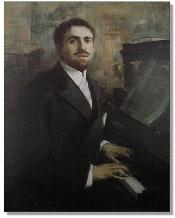
|
French salon music: light, fluffy, inconsequential, but also sensitive, lyrical, humorous, enchanting and capable, at its very best, of true gems. I will present a program of French salon music, as it befits a nice summer evening, concentrating on two of the best representatives of the genre: Reynaldo Hahn, composer, pianist, singer, music critic and lover and friend of Marcel Proust, and his contemporary, Cecile Chaminade, "not a woman who composes, but a composer who is a woman" as Ambroise Thomas put it, one of the most successful and prolific composers, whose immense popularity extended on both sides of the Atlantic, but whose reputation sadly unjustly plummeted after World War II, when musical taste and fashion turned away from French romantic music, and tended to dismiss its lighter aspects altogether.
|
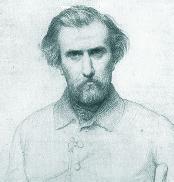 |
(jn/jn)
|
| Sat | Sep | 3 | 7:00 | Rameau: Platée or The Frog Princess - DVD
As the final instalment in the Classical Music Club of Toronto's Summer of French Music 2005, we are pleased to present on DVD an outstanding production from the Palais Garnier in Paris. Marc Minkowski and the period ensemble Les Musiciens du Louvre-Grenoble demonstrate their reputation as "one of the most exciting early-music ensembles performing opera today".

In the prologue, a group of Roman gods decides to create a new form of theatre. While on a drinking binge, they promise to "wage a never-ending battle against absurdity! We'll spare neither mortals nor gods!" The comedy follows, as Platée, a swamp nymph (written for a tenor and played in drag), sung by Paul Agnew, is so terribly ugly that the gods ridicule her. They set up an elaborate practical joke to make Platée believe that Jupiter is in love with her and wants to marry her. Alas, this is nothing but a cruel joke, and just before the wedding, Juno arrives to stop the proceedings. Of course it was all planned to go this way, though Juno didn't realize that the bride-to-be was a frog. Humiliated, Platée returns to her swamp, disappointed.
The highlight of this production is Paul Agnew in the title role. He performs as a kind of camp drag-queen frog but with a sense of humour and style that lends dignity to this grotesque creature. In fact, during the humiliating finale we actually find ourselves laughing one moment along with the gods and then immediately feeling guilty for enjoying ourselves so much at Platée's expense.
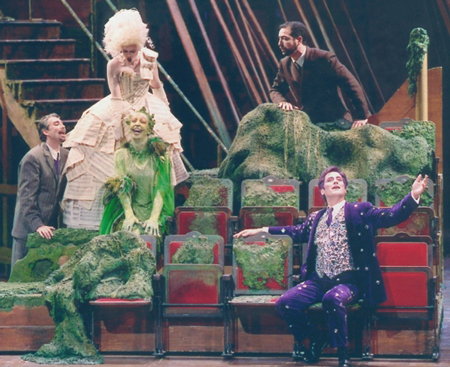
As for the production, the combination of ironic and witty direction by Laurent Pelly, who also designed the costumes, is set against a wacky assortment of sets by Chantal Thomas with sexy and energetic choreography by Laura Scozzi. The costumes are as bizarre and fantastical as the story, ranging from grotesque frog-like high-fashion for Platée and her band of nymphs to the witty musical notepaper gown for La Folie. Many animals are also present which gives this production a marvellously light and fanciful tone.
Come join us and celebrate the end of our season with the fun and effervescent music of this prize-winning video.
(js/ta)
|
|

